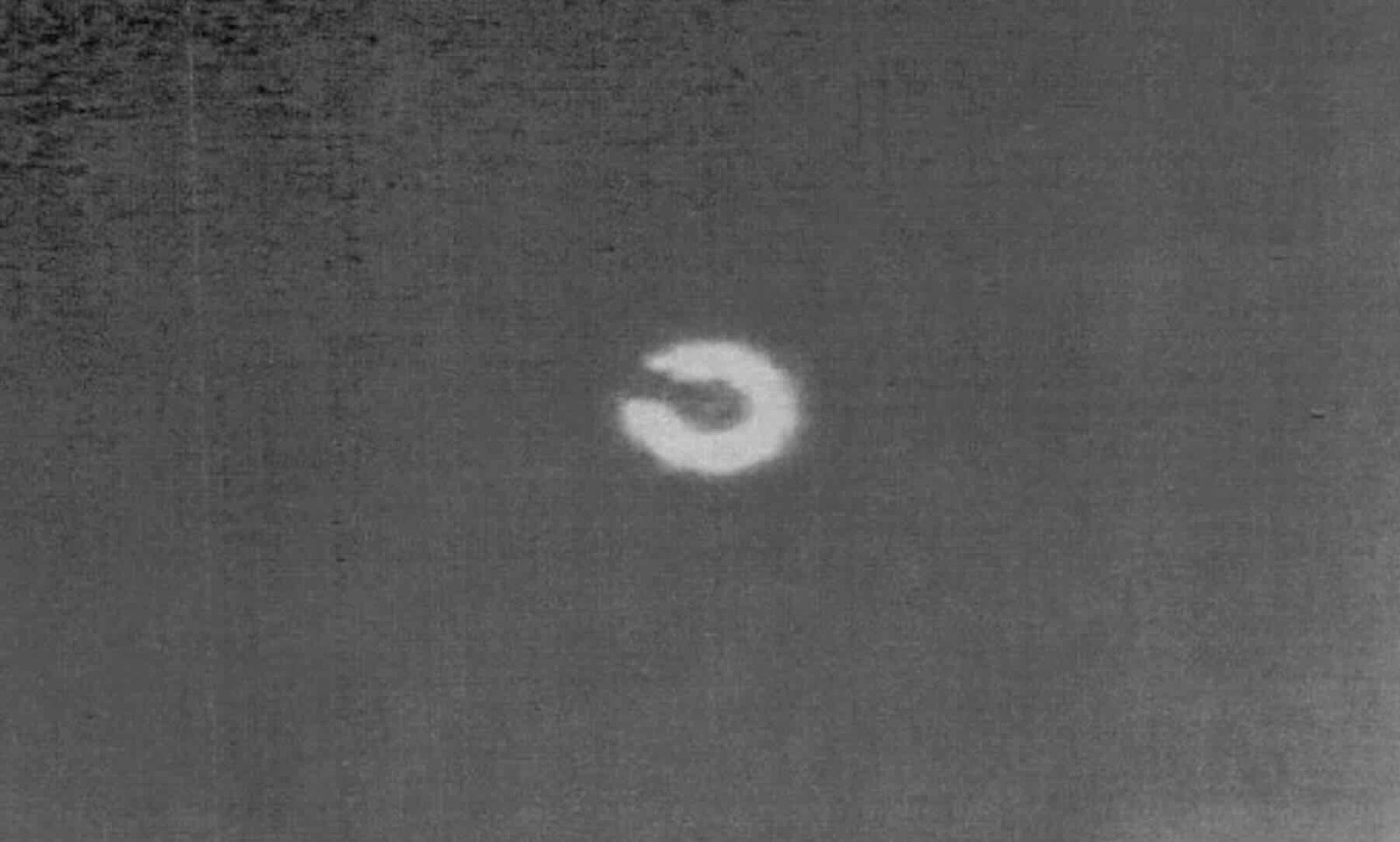New details have recently surfaced regarding an incident involving an unidentified object shot down over Canada’s Yukon territory in February 2023, including imagery obtained through a Canadian freedom of information act.
One of several shoot-downs that occurred in the days following an incident last year involving a Chinese spy balloon that traversed American airspace, Daniel Otis, a freelance investigative reporter writing for CTV News in Canada, revealed last month that he had successfully obtained images of the mysterious object obtained by pilots shortly before it was shot down.
Following the widely-reported incident, Canadian Chief of the Defence Staff Gen. Wayne Eyre initially suggested the image should be released publicly, although the Canadian military did not officially approve such actions at that time.
Despite pilot accounts that described the object as a metallic, cylindrical shape that appeared to possess a wire-tethered payload, secrecy on part of the Canadian government has only fueled public curiosity, giving rise to speculations about the object’s origin.
Now, the release of the grainy, black and white image of the object adds a new layer of intrigue to the puzzling incident.
Now, in a conversation with The Debrief, Canadian MP Larry Maguire addressed the Yukon shoot down event and speculations about it following the recent release of the images.
In light of this incident, do you believe Canada’s collaboration with NORAD is sufficient to address the potential risks posed by unidentified objects entering Canadian airspace?
We are currently unclear about the specific changes to NORAD’s processes and the procedures they have implemented since the previous incidents. While I understand that national security considerations may limit the information they can disclose, it would be wise for them to provide updates to policymakers and the public on what is permissible. Transparency, to the extent possible, would help build trust and ensure that stakeholders are informed. Establishing a clear structure for Canada’s engagement on this issue with NORAD would help improve the situation.
In recent months, both the U.S. and Canada have acknowledged their inability to accurately identify objects in their airspace. What vulnerabilities in our Canadian defense systems do you think these incidents reveal?
It is abundantly clear we are still not able to categorize everything in our airspace. Determining the origin and intent of UAP is paramount to ensure we adjust our capabilities to identify what is in our air space. A structured, deliberate effort to track and monitor instances of UAP needs to be part of a whole of government approach with a streamlined reporting system and engages the DND, RCMP, CSIS, CSEC, NAV Canada, Transport Canada, Coast Guard, the Canadian Nuclear Safety Commission, and any other agency or department that may have relevant information or data.
The Pentagon, NASA, and American lawmakers have been increasingly transparent about their investigations into UAPs. Should Canada be more proactive in addressing UAP investigations, and what role do you think the Office of the Chief Science Advisor’s Sky Canada Project will play?
Yes, Canada needs to be more proactive in addressing UAP reports. I am looking forward to the Chief Science Advisor’s report and recommendations. It will be a good starting point to have a broader conversation on the entire issue. It is my sincere hope that all government departments that are involved will cooperate and disclose the necessary information that the Chief Science Advisor requires.
There has been a rise in conspiracy theories due to the lack of detailed information surrounding these UAP incidents. How do you think the Canadian government should handle public concerns and transparency on UAPs to prevent the spread of misinformation?
The haphazard nature of our current approach leaves too much room for speculation. Enhancing government transparency and sharing data with researchers and the public can significantly reduce confusion and help investigations. There are a lot of talented individuals with expertise who are wanting to apply those skills and help get to the bottom of this issue. I am hopeful the Chief Science Advisor will include recommendations in her upcoming Sky Canada Project report that will touch on the over-classification of government information and data. While the government will not be mandated to implement anything contained in her report, it will at least provide a foundation to build from.
Given the growing public interest in UAPs and recent government investigations, how do you see the Canadian government’s approach to UAPs evolving over the next few years? Should there be more resources dedicated to these investigations?
To date the Liberal government hasn’t discussed this topic or responded to what’s happening south of the border. If they have been doing something behind the scenes, I am unaware of any specifics. I’m optimistic that as more attention comes to this discussion both domestically and internationally, governments will demonstrate a sincere effort to examine the origin and intent of UAP. The involvement of the Chief Science Advisor increases the likelihood of a government response. I believe the Standing Committee on Science is the ideal forum to examine her report and invite witnesses and government officials for questioning.
At a minimum, I would like to see relevant Ministers issue directives to their departments to establish a standard reporting mechanism and identify the appropriate personnel to investigate these reports. Additionally, declassifying relevant information for sharing with academics and researchers would be a constructive step forward.
There are rumours that the Canadian government and some scientists in Canada know more about a crash retrieval program and UAP data. Have you heard anything of this sort in your line of work to date? If so, can you give me details on what you might have heard?
Over the decades, various government departments or agencies have investigated UAP reports, but the full scope of these efforts and the extent of information remains unclear. I also don’t know which MOUs have been signed with our allies and how information is shared.
It is noteworthy that the U.S. Congress has heard testimony about a long-running program and that a formal investigation by the Intelligence Community Inspector General is ongoing, with many awaiting its results.
What remains absent is official government confirmation, which complicates perceptions for policymakers, academics, and the media, perpetuating the stigma around the topic. The encouraging news is that dedicated researchers and academics continue to advance the discussion, demonstrating this issue deserve serious examination.
For those who don’t have this issue on their radar, it’s noteworthy that Senate Majority Leader Chuck Schumer and Senator Mike Rounds are actively working on the UAP Disclosure Act to create a process for declassifying information. I believe Senator Schumer wouldn’t invest political capital in this effort without having encountered compelling evidence suggesting there is indeed significant information to reveal.
Are there any final comments you would like to add?
I commend the journalists delving into this issue and salute the policymakers across nations who are asking questions and trying to get answers. It’s also good to see how many people are engaged and advocating for greater transparency.
Chrissy Newton is a PR professional and founder of VOCAB Communications. She currently appears on The Discovery Channel and Max and hosts the Rebelliously Curious podcast, which can be found on The Debrief’s YouTube Channel on all audio podcast streaming platforms. Follow her on X: @ChrissyNewton and at chrissynewton.com.

